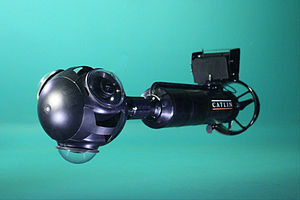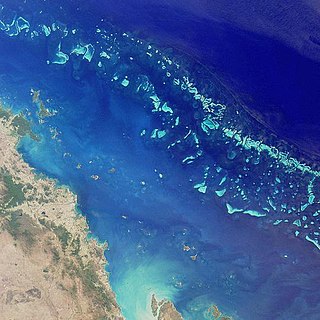
The Great Barrier Reef is the world's largest coral reef system composed of over 2,900 individual reefs and 900 islands stretching for over 2,300 kilometres (1,400 mi) over an area of approximately 344,400 square kilometres (133,000 sq mi). The reef is located in the Coral Sea, off the coast of Queensland, Australia, separated from the coast by a channel 100 miles wide in places and over 200 feet deep. The Great Barrier Reef can be seen from outer space and is the world's biggest single structure made by living organisms. This reef structure is composed of and built by billions of tiny organisms, known as coral polyps. It supports a wide diversity of life and was selected as a World Heritage Site in 1981. CNN labelled it one of the seven natural wonders of the world in 1997. Australian World Heritage places included it in its list in 2007. The Queensland National Trust named it a state icon of Queensland in 2006.

Underwater photography is the process of taking photographs while under water. It is usually done while scuba diving, but can be done while diving on surface supply, snorkeling, swimming, from a submersible or remotely operated underwater vehicle, or from automated cameras lowered from the surface.
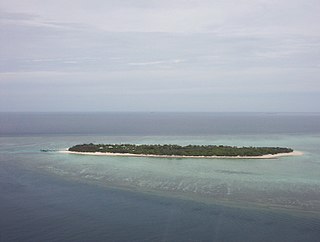
Heron Island is a coral cay located near the Tropic of Capricorn in the southern Great Barrier Reef, 80 kilometres north-east of Gladstone Park, Queensland, Australia, and 460 km (290 mi) north-north-west of the state capital Brisbane. The island is situated on the leeward (western) side of Heron Reef, a fringing platform reef of significant biodiversity, supporting around 900 of the 1,500 fish species and 72% of the coral species found on the Great Barrier Reef. During the summer months Heron Island is also home to over 200,000 birds including Noddy Terns and Mutton Birds.

Nelsons Island or Nelson Island or Isle Legour is a small uninhabited island in the Great Chagos Bank, of the Chagos Archipelago in the Indian Ocean. As a protected nature reserve, access to the island is strictly restricted.
Ron Josiah Taylor, AM was a prominent Australian shark expert, as is his widow, Valerie Taylor. They were credited with being pioneers in several areas, including being the first people to film great white sharks without the protection of a cage. Their expertise has been called upon for films such as Jaws, Orca and Sky Pirates.
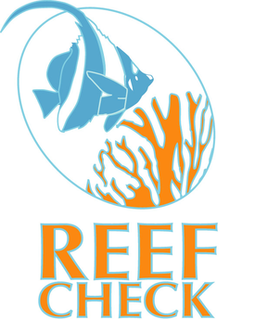
Reef Check is an international non-governmental organization dedicated to the conservation of two reef ecosystems: tropical coral reefs and Californian rocky reefs. The Foundation is headquartered in Los Angeles, California, United States, but uses data from volunteer scuba diver teams in over 80 countries, ranging from Australia, Japan, to even Germany. It is the United Nations’ official coral reef monitoring program.
Catlin Group Limited was a Bermuda-based specialty insurance and reinsurance company. Catlin operated six underwriting hubs worldwide and operated more than 55 offices worldwide. It owned the largest syndicate at Lloyd's of London, based on 2011 gross written premiums. Catlin shares were listed on the London Stock Exchange until it was acquired by XL Group plc in May 2015.

Coral reef protection is the process of modifying human activities to avoid damage to healthy coral reefs and to help damaged reefs recover. The key strategies used in reef protection include defining measurable goals and introducing active management and community involvement to reduce stressors that damage reef health. One management technique is to create Marine Protected Areas (MPAs) that directly limit human activities such as fishing.
Pandora Reef is a low-lying island in addition to being an adjacent fringing reef. It is in Halifax Bay in Queensland, Australia. It is 13 kilometres (8.1 mi) from the Greater Palm group. The name Pandora Reef dates back to at least 1889.
Dive Xtras is a manufacturer of diver propulsion vehicles (DPVs) or dive scooters in Mukilteo, Washington, United States.
In Oceania, Google Street View is available in most parts of Australia and New Zealand.
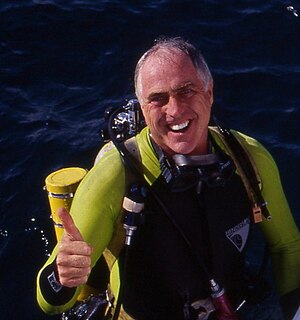
Bob Halstead, has made significant contributions to the sport of scuba diving in a multitude of capacities: photographer, author of eight diving books, early innovator in the development of dive tourism, pioneer in the dive liveaboard industry, diving instructor and educator, marine-life explorer and influential diving industry commentator. An ardent diver since 1968, Halstead has over 10,000 logged dives.

The Catlin Seaview Survey, later renamed the XL Catlin Seaview Survey, was a major scientific expedition which commenced in September 2012, whose aim was to document the composition and health of coral reefs worldwide. Specifically, the survey aimed to "carry out a rapid assessment of the current state of coral reef systems and to make this scientific record publicly available for scientists worldwide to use". The survey was sponsored by the Catlin Group until the survey ended when the Catlin group ended sponsorship. The original team created a film, chasing coral and a new, global initiative known as 50 reefs.
St. Crispin's Reef is an elongate outer-shelf coral reef in the Great Barrier Reef, Queensland, Australia.
Richard John Fitzpatrick is an Australian Emmy award winning cinematographer and adjunct research fellow specialising in marine biology at James Cook University.
COTSBot is a small intelligent underwater craft 4.5 feet (1.4 m) long, which is designed by Queensland University of Technology (QUT) to kill the very destructive crown of thorns starfish in the Great Barrier Reef off the north-east coast of Australia. It identifies its target using an image-analyzing neural net to analyze what an onboard camera sees, and then lethal-injects the starfish with bile salts or similar using a needle on the end of a long underslung foldable arm.
The following index is provided as an overview of and topical guide to Wikipedia's articles on recreational dive sites. The level of coverage may vary:
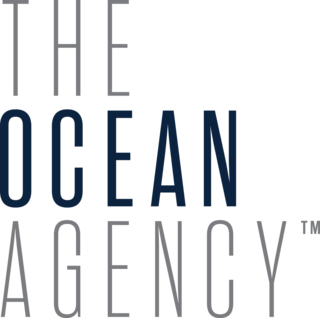
The Ocean Agency is an international nonprofit organization dedicated to marine conservation. Currently, The Ocean Agency is focused on coral reef conservation.
Belgian Scientific Expedition was a scientific survey of the Great Barrier Reef, conducted in 1967-1968.

Valerie May Taylor AM is a conservationist, photographer and filmmaker, and an inaugural member of the diving hall-of-fame. With her husband Ron Taylor, she made documentaries about sharks, and filmed sequences for films including Jaws (1975).
